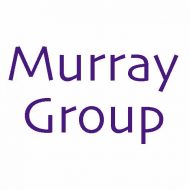MP252
Authors
Neda Feizi Gilandeh1; Blessing Chisom Egbejiogu2; Kyle L. Wilhelm1; Kermit K. Murray2; Touradj Solouki1
Institutes
1Baylor University, Waco, TX; 2Louisiana State University, Baton Rouge, LA
Introduction
Native electrospray ionization mass spectrometry (n-ESI/MS) combined with ion mobility spectrometry (IMS) provides an opportunity to study indigenous forms of proteins in biological samples. Recently, we reported on combining n-ESI/MS with laser ablation sample transfer (LAST) and showed that collision-induced unfolding (CIU) characteristics of proteins before and after LAST were indistinguishable. However, gas-phase CIU results could not conclusively confirm that native structures were preserved throughout the entire laser ablation process. For instance, some “denatured” proteins might fold back to their original native-like forms after solvent capture and complicate the data analysis. Here, we utilize protein denaturing/renaturing, combined with CIU, MALDI, and proteomics results to show proteins retain their original conformations throughout the laser ablation process.
Methods
A custom optic parametric oscillator system (OPO) at Louisiana State University (LSU) was used to laser ablate protein samples and ship them to Baylor University (BU) for native MS and bottom-up proteomics analyses. Stock solution for proteins were adjusted to 200 µM in a mixture of 95% 200 mM NH 4OAc:5% ACN (pH 7.3 ± 0.1). Native IM-MS, UPLC-MS, and broadband collision-induced unfolding data were acquired on a Waters Synapt G2-S system (Milford, MA) at BU. Bottom-up digestion using a single-pot solid-phase-enhanced sample preparation (SP3) method followed by UPLC-IM-MS/MS under enhanced data-independent acquisition (UPLC-HDMS E) was used for protein identification; results were further confirmed by MALDI-MS at LSU. All CIU data were extracted, plotted, and analyzed using CIU Suite 2.
Preliminary Data
As corroborated with our preliminary CIU data, denatured forms of some proteins ( e.g., Bovine Serum Albumin (BSA)) could readily refold back to their native-like structures in ammonium acetate. However, denatured Carbonic Anhydrase (CA) species did not refold back to their original forms in ammonium acetate solvent. We exploited this protein aggregation property of CA along with MALDI, and bottom-up proteomics data to study the preservation of native conformations throughout the laser ablation. Broadband CIU data collected at gas-phase unfolding activation energy intervals of five volts from 10 V to 120 V for nESI and denatured-refolded proteins (in solution) yielded indistinguishable CIU curves. Unlike BSA, denatured CA proteins did not refold to their native structure and seemed to form protein aggregates. For instance, in agreement with previous native-MS reports, CA directly dissolved in native ammonium acetate yielded charge-state species +10, +9, and +8. Once the CA was dissolved in a conventional ESI solvent (~49%:~50%:~0.1% water: ACN: formic acid), denatured CA showed the presence of expected higher charge states (z >+20). However, ESI mass spectrum acquired after drying the denatured CA and redissolving it in a native solvent didn’t show any peaks corresponding to carbonic anhydrase; these results suggest that CA does not refold back to its original native structure. Moreover, the absence of any MS signal for CA in the renaturing solvent is consistent with previous findings and suggests the formation of large protein aggregates that cannot be detected in nESI; our preliminary MALDI and proteomics results are consistent with this view. Our preliminary ion mobility and CIU data for CA before and after the laser ablation yielded indistinguishable plots. Strategies for studying potential conformational changes during the laser ablation process will be presented.
Novel Aspect
Native mass spectrometry combined with bottom-up proteomics confirms preservation of protein conformations throughout the laser ablation process.

